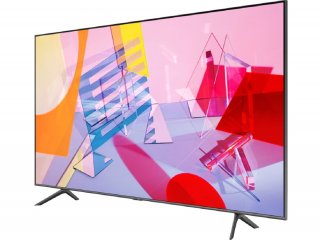Own a QLED HDTV? Stop Watching Netflix and Change These 5 Settings
Some QLED models now boast Game Enhancer and Dynamic Black Equalizer modes, which can give today’s graphics-intensive games a new and exciting layer, such as making it relatively easier to spot objects or players hiding in shadows.
As a budget-conscious consumer, you’re confident that you made the right choice by saving a few hundred bucks and going with a Samsung QLED HDTV.
Sure, you’ll slightly miss out on the highly regarded picture quality of OLED panels, but know that QLED TVs still provide outstanding overall picture and are probably the next best option out there—plus, you won’t have to deal with those annoying issues of image retention and burn-in.
After positioning your gorgeous QLED HDTV in your living room, the next step is to make sure your panel is turned to the proper settings so that all of its visual goodness can be showcased.
When you turn on your TV for the first time, make sure to immediately head over to the settings for picture presets. You might be tempted to go with the Dynamic mode, but this only works best in incredibly bright, showroom-type settings. As for the Movie mode, you will only see the benefits in a room that’s perfectly dark at all times, so choose this if you can create such a viewing environment. Most likely, your best bet is the Standard/Natural option, and that should get you primed for more detailed tweaks in your settings later on.
Second, no matter what kind of HDTV you have, the first setting you need to change is to lower the sharpness, which counterintuitively, will actually improve the images on the screen. Many people believe that if you raise the sharpness control, you’ll receive a sharper picture—but that is far from the truth. The conundrum is that the sharpness control itself doesn’t do anything to boost detail—instead, that particular detail is often masked by an artificial-looking enhancement. Just turn the sharpness level all the way down, and you should immediately see a noticeable difference.
Most likely on your Samsung QLED TV, you will have HDR+, which has the ability to replicate an HDR viewing experience for content that doesn’t natively support HDR. It’s indeed a nice function, but if you find that your HDR content is too dim, try increasing the brightness a bit and set the Contrast Enhancer to high. Also, be mindful that HDR is automatically enabled for native apps, so when you begin playing HDR content, some of the settings will change automatically. If the panel is too bright or dark for your liking, adjust accordingly.
Next up is your brightness level. Keep in mind that QLEDs utilize powerful backlighting that will make your TV much brighter than any OLED model, which can be a particular advantage in brightly lit rooms or for daytime viewing. If the energy-saving Eco mode is on by default, it’s best to disable it to prevent your TV from automatically adjusting the brightness level. Try to start at the lowest brightness setting and go up from there. The Color Tone setting is really up to your personal preference, as some people may want to have a warmer or cooler picture.
Finally, if you’re an avid gamer that uses PlayStation or Xbox, make sure to enable Game mode from the General settings tab before picking up your controller. This will provide the most dynamic gaming experience with the lowest input lag. Some QLED models now boast Game Enhancer and Dynamic Black Equalizer modes, which can give today’s graphics-intensive games a new and exciting layer, such as making it relatively easier to spot objects or players hiding in shadows.
Ethen Kim Lieser is a Science and Tech Editor who has held posts at Google, The Korea Herald, Lincoln Journal Star, AsianWeek and Arirang TV. He currently resides in Minneapolis.
Image: Reuters

